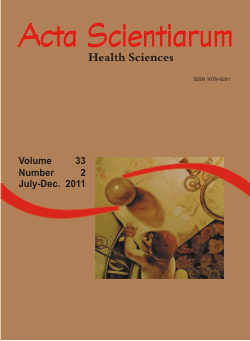Banco de leite humano: uma análise das diferenças entre doadoras adultas e adolescentes
Resumo
Os objetivos do estudo foram realizar a análise do perfil da população e salientar as diferenças entre doadoras adultas e adolescentes. Foi um estudo transversal, analítico, realizado no Banco de Leite Humano (BLH) de Maringá, Estado do Paraná. A população foi o total de doadoras cadastradas em 2004 (443) e a fonte de dados a Ficha de Inscrição de Doadoras. Foram analisadas variáveis sócio-econômicas, demográficas e perinatais. A variável idade foi dividida em doadoras adolescentes (< 20 anos) e adultas (>= 20 anos) e a partir daí a condição de ser doadora adolescente foi considerada como variável dependente, sendo testadas interações e diferenças entre esta e as outras variáveis do estudo. Observou-se frequência de 16,35% de adolescentes e associação estatisticamente significativa (p < 0,001) entre mulheres adolescentes, baixa renda, viver sem companheiro, prematuridade e parto cesáreo. Concluiu-se que o grupo de doadoras adolescentes foi bastante expressivo e que elas necessitam de habilidade dos profissionais de saúde para lidarem com suas peculiaridades e maior incentivo à prática do aleitamento materno, considerando-se suas condições sócio-econômicas e perinatais desfavoráveis.Downloads
DECLARAÇÃO DE ORIGINALIDADE E DIREITOS AUTORAIS
Declaro que o presente artigo é original, não tendo sido submetido à publicação em qualquer outro periódico nacional ou internacional, quer seja em parte ou em sua totalidade.
Os direitos autorais pertencem exclusivamente aos autores. Os direitos de licenciamento utilizados pelo periódico é a licença Creative Commons Attribution 4.0 (CC BY 4.0): são permitidos o acompartilhamento (cópia e distribuição do material em qualqer meio ou formato) e adaptação (remix, transformação e criação de material a partir do conteúdo assim licenciado para quaisquer fins, inclusive comerciais.
Recomenda-se a leitura desse link para maiores informações sobre o tema: fornecimento de créditos e referências de forma correta, entre outros detalhes cruciais para uso adequado do material licenciado.























5.png)







